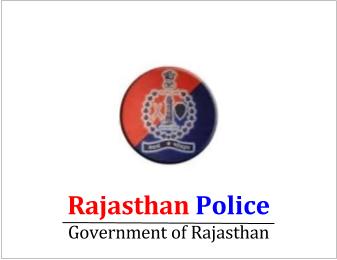(Syllabus) Rajasthan Police Exam : Post of Inspector Police Telecommunication

(Syllabus) Rajasthan Police Exam : Post of Inspector Police Telecommunication
SYLLABUS FOR THE WRITTEN EXAMINATION FOR DIRECT RECRUITMENT TO THE POST OF INSPECTOR POLICE TELECOMMUNICATION UNDER THE RAJASTHAN POLICE SUBORDINATE SERVICE
PART —A (Marks-150)
GENERAL STUDIES
- Role of Telecommunication in improving working efficiency of Police Department.
- Police Organisation and Structure.
- Changing role of Police in the context of Democratic aspiration of the people of India.
- Concept of Social Justice and Secularism
- Fundamental Rights and Duties of citizens under the Constitution of India.
- Directive Principles of State Policy, enumerated in the Constitution of India .
- Geographic attributes of India with special reference to Rajasthan.
- Relevance of concept of Mixed Economy in the Developing countries , with particular reference to India.
- History of Rajasthan .
- 10.Current Affairs .
PART - B ( Marks-250)
ELECTRONICS & TELECOMMUNICATION ENGINEERING
1. Physical Electronics, Electronic Devices and ICs : Electrons holes in Semiconductors; Carrier Statistics; Mechanism of Current flow in a Semiconductor; Hall Effect; Junction Theory;. Different Types of Diodes and their Characteristics; Bipolar Junction Transistor; Field Effect Transistors;
Power Switching Devices like SCRs, GTOs, Power MOSFETs; Basics of ICs-Bipolar, MOS and CMOS Types; Basics of Opto Electronics.
- Network Theory : Network Analysis Techniques; Network Theorems, Transient Response; Steady State Sinusoidal Response; Network Graphs and their Applications in Network Analysis; Tellegen's Theorem; Two Port Networks; Z, Y, h and Transmission Parameter's combination of Two Ports; Analysis of common Two ports. Network Functions; Parts of Network Functions; Obtaining a Network Function from a given part.
- Analog Electronic Circuits : Transistor Biasing and Stabilization; Small Signal Analysis; Voltage & Power Amplifiers; Frequency Response; Wide Band Techniques; Feedback Amplifiers; Tuned Amplifiers; Oscillators; Rectifiers and Power Supplies; Operational Amplifiers;. PLL; Four Quadrant Multipliers; IC Regulators. Pulse Shaping Circuits and Waveform Generators.
- Electromagnetic Theory and Antennas : Analysis of Electrostatic and Magnetostatic Fields, Laplace's and Poisson's Equations; Boundary value problems and their solutions; Maxwell's Equations; Application to Wave Propagation in Bounded and Unbounded media, Transmission Lines: Basic Theory, Standing Waves; Matching Applications, Micro Strip lines; Basics of Wave Guides and Resonators; Elements of Antenna Theory; Propagation of EM waves in HF, VHF , UHF, and Microwave Frequencies, Characteristics and Analysis of HF, VHF and UHF Antennas; Antenna Arrays .
- Electronic Measurements and Instrumentation : Basic concepts; Standards and Error Analysis; Measurements of Basic Electrical Quantities and Parameters; Electronic Measuring Instruments and their Principles of working: Analog and Digital; Comparison; Characteristics; Application
- Analog & Digital Communication Systems: Basic Information Theory; Modulation and Detection in Analog and Digital Systems; Sampling and Data Reconstructions; Quantization & Coding; Time Division and Frequency Division Multiplexing; Equalization; Optical Communication in Free space & Fiber Optic; Basics Of Satellite Communication; Concepts of Mobile Communication; Mobile Radio Propagation & Components of Cellular Systems; Different Types of Modulation Techniques- AM,FM,PM Delta Modulation ,Pulse Code Modulation ,Detection Techniques in various Types of Modulation used in Communication; Basic study of Communication Protocols.
- Microwave Engineering: Microwave Tubes and Solid State Devices; Microwave Generation and Amplifiers; Waveguides and other Microwave Components and Circuits; Micro Strip Circuits; Microwave Antennas; Microwave Measurements; Masers; Lasers; Microwave Communication Systems; Principles & Working of Different types of Radars.
- Computer Engineering: Number Systems; Data Representation; Programming; Elements of a High Leliel Programming Language; Use of Basic Data Structures; Fundamentals of Computer Architecture; Processor Design; Control Unit Design; Memory Organization; I/O System Organization; Microprocessors; Architecture and Instruction set of Microprocessors 8085, 8086, 80486, 68000 and Pentium; Assembly Language Programming; Microprocessor Based System Design; Typical Examples; Personal Computers and their Typical uses.
- Industrial Electronics: Principle, Construction & Characteristics of Four/Five Layer Devices -SCR, DIAC, TRAIC, Power MOSFET; Power Control & Rectifiers; Inverters & Converters ; Speed Control of DC Motors and Timer Circuits; Heating, Welding & their Applications.
Courtesy: Rajasthan Police


